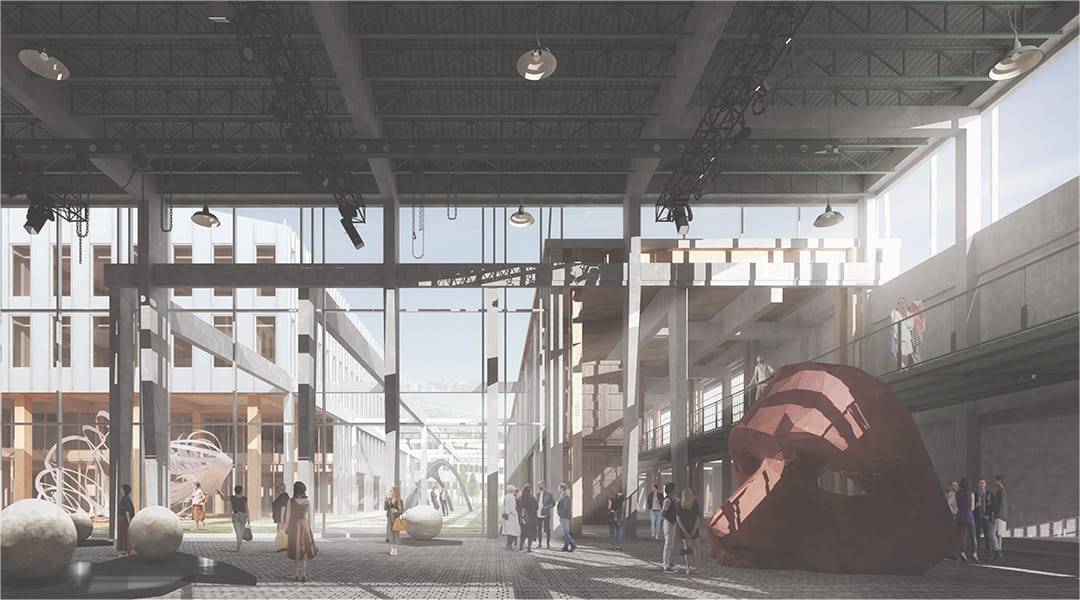
Les Ateliers Cabot
Reinventing Cities is a call for projects launched by C40 that aim to encourage carbon neutral urban regeneration and to implement the most innovative ideas for transforming underutilized sites into hotspots of highly sustainable development and resilience, and to serve as a model for future developments.
Les Ateliers Cabot is a place of research, creation, and development; a multifunctional site housing artists’ studios (exhibition, presentation, and event spaces), office space, an industrial and technological incubator, facilities dedicated to food production and distribution, and businesses committed to the pooling and circularity of resources, all operating within a large urban green space.

CLIENT: Les Ateliers Cabot
CATEGORY: Mixed-Use Development
LOCATION: 4000 Saint-Patrick Street, Montreal
DATE: 2021
SPAN: 301 390 sq. ft.
STATUS: Winner of C40 Reinventing Montreal 2021
| COLLABORATORS: | Arup, Akonovia, Rousseau Lefebvre, | ||
| Aquartis, Brillant Matters, Centre PHI, CUPUM, Fondaction, Fondation OSMO, Gehl, Grand Potager, Groupe C. Laganière, Inerjys, Local Logic, Ma Bicyclette, MASSIVart, Pro-Vert Sud-Ouest, Still Good, RAR. | |||
Les Ateliers Cabot is the genesis of the collective dream of providing non-profit organizations with access to property that provides them with the means for honouring their missions for their community. The project presents a development model anchored in the core of the social and circular economy. The visionaries of the project are comprised of a group of individuals which is supported by a community development NPO comprised of Sid Lee Architecture, Ateliers Créatifs Montréal, the Collectif Récolte, and The Centre for Sustainable Development – with additional members to be added from among the occupants, tenants, owners, and operators of the project. The model also proposes to make 4000 Saint-Patrick a land trust that protects and ensures the permanency of the C40 objectives. In the context of a health crisis, where the most vulnerable populations have incurred the greatest costs, this type of model is a safety net for, and at the service of, citizens.



This approach rebalances traditional development objectives, swapping economic profitability in lieu of the benefits derived from the moral pact between man and the planet.
Les Ateliers Cabot is in the spirit of mininal impact, where the essence of the location is preserved by acting only where it is imperative to do so "mutatis mutandis". This is achieved by recycling, restoring, and reaffirming the industrial soul of the Canadian Power Boat Corporation site - a location built for warship building and connectivity to the city’s transport canals.
Les Ateliers Cabot revolves around water as a historic element to be commemorated, and as a natural resource to be placed at the heart of its landscape and environmental strategy. It is a whole system of valleys, marshes, and basins, with seasonal fluctuations that liven up the site, and presents the possibility to reconnect two major biodiversity corridors of the Aqueduct Canal and the Lachine Canal. The architecture blends into its simplicity, allowing flora and fauna to regain control over the built environment (inspired by Gilles Clément's concept of the third landscape). The site thus acts as a link between man and nature, at a perfect junction between its outlying districts.
